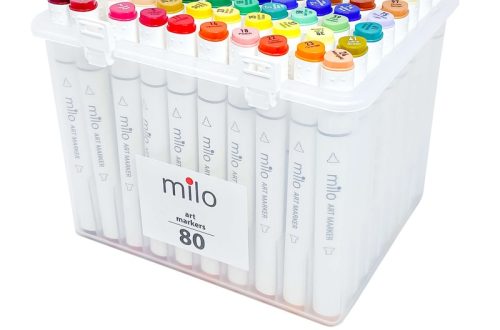Part 1: Introduction to Colored Pencils
Colored pencils are a versatile and accessible medium for artists of all skill levels. They provide a great introduction to the world of art and can be used to create stunning pieces. Understanding the basics of colored pencil techniques is essential for any beginner looking to master this medium.
1. Choosing the Right Materials:
Investing in quality materials is crucial for achieving optimal results with colored pencils. Artist-grade colored pencils, often made from high-quality pigments and wax binders, offer superior color saturation, blendability, and lightfastness. These characteristics are essential for creating vibrant and long-lasting artworks.
The choice of paper is equally important. Different papers have varying textures, weights, and tooth, which can significantly impact the application and blending of colored pencils. Experimenting with different types of paper will help you determine the ideal surface for your desired effects. For example, a rougher paper can provide more texture and grip for the pencils, while a smoother paper may be better suited for detailed work.

2. Understanding Pencil Pressure:
Controlling pencil pressure is a fundamental technique in colored pencil art. Light pressure creates delicate, translucent layers, allowing for subtle shading and blending effects. Heavy pressure, on the other hand, produces bold, vibrant colors and can be used to create highlights and shadows.
Experimenting with different pressure levels will help you understand the range of effects you can achieve with colored pencils. By varying the pressure, you can create depth, texture, and dimension in your artwork. Additionally, learning to control pencil pressure will allow you to create more precise and controlled strokes. By investing in quality materials and mastering the technique of pencil pressure, you’ll be well-equipped to embark on your colored pencil art journey and create stunning works of art.
Part 2: Layering and Blending Techniques
Layering and blending are essential techniques for creating depth and dimension in colored pencil art. Understanding how to layer colors and blend them effectively can elevate the quality of your work as a beginner.
1. Layering Colors:
Layering colors is a fundamental technique in colored pencil art that allows for the creation of rich, complex hues and subtle shading. By applying multiple layers of different colors, artists can achieve a depth and dimension that is difficult to replicate with a single layer.
Understanding color theory is essential for successful color layering. Knowing how colors interact and complement each other can help artists create harmonious and visually appealing compositions. For example, complementary colors can be used to create contrast and vibrancy, while analogous colors can be used to create smooth transitions and unity.

When layering colors, it’s important to apply thin, even layers to avoid overwhelming the paper. Building up the color gradually allows for greater control and precision. Additionally, using a light touch can help prevent the colors from becoming muddy or opaque.
2. Blending Methods:
Blending is another crucial technique in colored pencil art that can help create smooth transitions and a polished finish. There are several methods for blending, each with its own advantages and disadvantages.
- Direct Blending: This method involves using the side of a colored pencil to blend colors directly on the paper. It’s a simple technique that can produce subtle blends.
- Blending Stumps: Blending stumps are made from compressed paper and can be used to blend colors more smoothly and evenly.
- Solvents: While less commonly used, solvents can be used to create a more fluid effect and blend colors more seamlessly.
However, solvents can also affect the color intensity and may not be suitable for all types of paper.
Part 3: Creating Texture and Detail
Texture and detail are what bring colored pencil art to life. Understanding how to create various textures and incorporate fine details can add depth and realism to your artwork as a beginner.

1. Texture Techniques:
Experimenting with different mark-making techniques is a powerful way to add depth and interest to your colored pencil drawings. By varying your strokes, pressure, and the angle at which you hold your pencil, you can create a wide range of textures.
- Hatching: This technique involves creating parallel lines to create texture and shading. By varying the distance and direction of the lines, you can achieve different effects.
- Cross-hatching: This technique involves crossing lines in different directions to create denser textures and deeper shadows.
- Circling: By creating small circles or dots, you can simulate textures like rough surfaces or fabrics.
- Layering: Layering multiple colors and textures can create complex and realistic effects.
Practicing these techniques will allow you to develop your own unique style and create visually interesting and engaging drawings.
2. Adding Fine Details:
Mastering the art of fine detail is essential for bringing realism to your colored pencil drawings. Whether you’re capturing the intricate pattern of a feather or the subtle nuances of a portrait, precision and control are key.
- Sharp Pencils: Using a sharp pencil is essential for creating fine details. A dull pencil will produce broader strokes and may make it difficult to achieve precision.
- Steady Hand: Developing a steady hand is important for drawing fine lines and details. Practice exercises like drawing straight lines and circles can help improve your hand-eye coordination.
- Patience: Adding fine details requires patience and attention to detail. Take your time and don’t rush, as precision is key.
By mastering these techniques, you can create detailed and realistic colored pencil drawings that showcase your skill and creativity.

Part 4: Understanding Color Theory
Color theory is a fundamental aspect of art, and understanding how colors work together is essential for any beginner learning to use colored pencils. Learning the basics of color theory will help you create harmonious, visually appealing compositions.
1. Understanding Color Relationships:
A strong understanding of color theory is essential for creating balanced and aesthetically pleasing colored pencil artworks. By learning about different color schemes, such as complementary, analogous, and monochromatic, beginners can develop a sense of color harmony and create visually compelling compositions.
- Complementary Colors: These are colors that are opposite each other on the color wheel, such as red and green, blue and orange, or yellow and purple. Complementary colors create strong contrast and can be used to add visual interest and excitement to a composition.
- Analogous Colors: These are colors that are adjacent to each other on the color wheel, such as red, orange, and yellow, or blue, purple, and violet. Analogous colors create a harmonious and soothing effect and are often used in nature-inspired scenes.
- Monochromatic Colors: This color scheme uses different shades and tints of the same color. Monochromatic compositions can create a sense of unity and simplicity.
By experimenting with different color schemes and understanding how colors interact, beginners can create a wide range of visually appealing and emotionally resonant artworks.

2. Using Color to Evoke Emotion:
Color has a powerful influence on our emotions and can be used to create a specific mood or atmosphere in artwork. Different colors can evoke different feelings, and by understanding these psychological associations, beginners can use color strategically to convey the intended emotions in their work.
For example, people often associate warm colors like red, orange, and yellow with energy, excitement, and passion. They often associate cool colors like blue, green, and purple with calmness, peace, and sadness. By carefully selecting colors and using them in combination, artists can create powerful and evocative artworks that resonate with viewers on an emotional level.
Part 5: Tips for Beginners Using Colored Pencils
As a beginner, there are several tips and tricks that can help you make the most of your colored pencil art. By incorporating these suggestions into your practice, you can enhance your skills and create more polished and professional-looking artwork.
1. Practice Patience
Working with colored pencils requires patience and attention to detail. Take your time when layering colors and building up your artwork. Rushing through the process can result in a less refined final piece.
2. Experiment and Enjoy the Process
Colored pencils offer a wide range of possibilities, so don’t be afraid to experiment and find your unique style. Enjoy the process of creating and allow yourself the freedom to explore the medium.
Part 6: Conclusion
Mastering colored pencil techniques as a beginner is a rewarding journey that offers endless possibilities for artistic expression. By learning the fundamentals of layering, blending, creating texture, and understanding color theory, beginners can unlock the full potential of colored pencils and create stunning works of art. With patience, practice, and a willingness to experiment, anyone can develop their skills and produce captivating and professional-looking colored pencil artwork.




